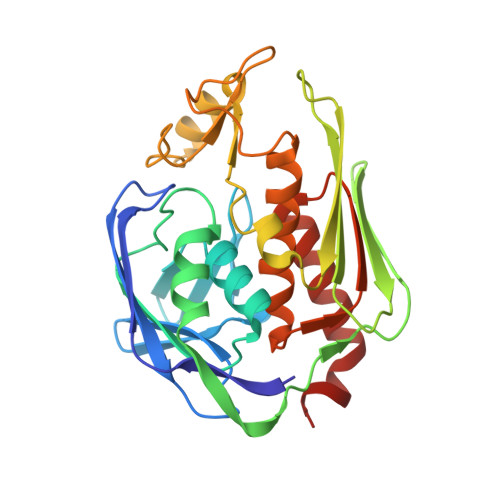Species-specific and inhibitor-dependent conformations of LpxC: implications for antibiotic design.
Lee, C.J., Liang, X., Chen, X., Zeng, D., Joo, S.H., Chung, H.S., Barb, A.W., Swanson, S.M., Nicholas, R.A., Li, Y., Toone, E.J., Raetz, C.R., Zhou, P.(2011) Chem Biol 18: 38-47
- PubMed: 21167751
- DOI: https://doi.org/10.1016/j.chembiol.2010.11.011
- Primary Citation of Related Structures:
3P3C, 3P3E, 3P3G - PubMed Abstract:
LpxC is an essential enzyme in the lipid A biosynthetic pathway in gram-negative bacteria. Several promising antimicrobial lead compounds targeting LpxC have been reported, though they typically display a large variation in potency against different gram-negative pathogens. We report that inhibitors with a diacetylene scaffold effectively overcome the resistance caused by sequence variation in the LpxC substrate-binding passage. Compound binding is captured in complex with representative LpxC orthologs, and structural analysis reveals large conformational differences that mostly reflect inherent molecular features of distinct LpxC orthologs, whereas ligand-induced structural adaptations occur at a smaller scale. These observations highlight the need for a molecular understanding of inherent structural features and conformational plasticity of LpxC enzymes for optimizing LpxC inhibitors as broad-spectrum antibiotics against gram-negative infections.
- Department of Biochemistry, Duke University Medical Center, Durham, NC 27710, USA.
Organizational Affiliation:



















